A Spectator’s Indulgence of the Merging of Hannibal Lecter and Will Graham | Analysing Television's Most Mesmerising Dynamic
Digesting the food on the platter in Bryan Fuller's Hannibal.

WARNING
This essay contains some descriptions of gore and violence, as well as spoilers for all seasons of Hannibal.
I highly encourage you to listen to the soundtrack while reading this.
You sit in that chair, as you have so many times before. It holds among its molecules, the vibrations of all of our conversations ever held in its presence.
- Dr. Hannibal Lecter, Mizumono.
With the contrast of the soft glance of the lense upon the macabre art of the murders, the score pulsating through the veins of the story, and the diligently chosen words which hover in the air after their utter, Hannibal is a feast with an abundance of flavours. And as it’s entreé is the complicated relationship between Will Graham and Dr Hannibal Lecter.
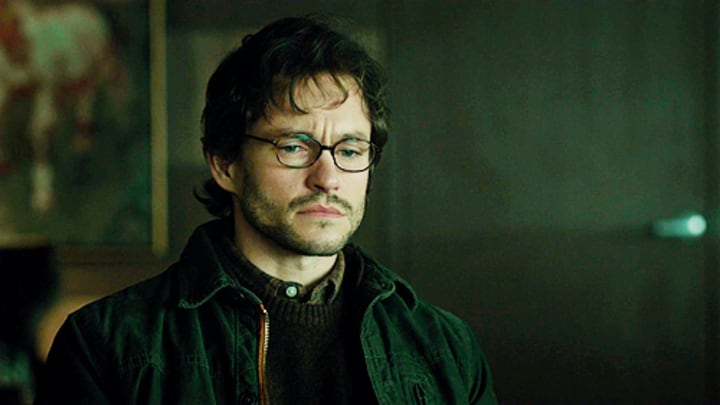
In the first episode of season one, Apéretif, we are introduced to special investigator Will Graham (Hugh Dancy); a scruffy professor turned special investigator closer to Aspergers and autistics on the spectrum than narcissists and sociopaths. With a burdensome gift of being able to empathise with criminals to an extent like no others, Graham is consulted by the FBI to get in the heads of their most horrendous killers.
And then we have Dr Hannibal Lecter (Mads Mikkelsen); an elegant and well-revered European psychiatrist. Clean-shaven and dressed in tailored suits, with bookcases climbing his walls and classical music filling his home, Lecter is the man of the evening. Recruited by agent-in-charge of the FBI behavioural unit, Jack Crawford (Laurence Fishburne), to consult on cases and keep an eye on Will as he ventures into twisted minds and bloodied investigations, he soon becomes Will’s psychiatrist - and thus the mind games begin.
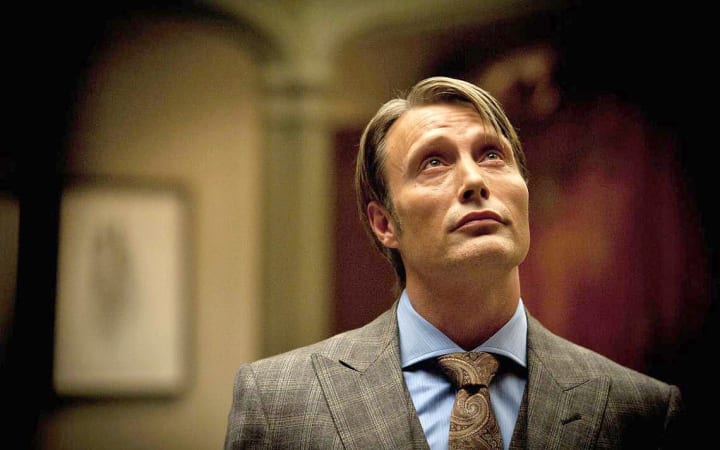
Now, of course, we the audience are aware of Hannibal’s true nature; a prolific cannibalistic killer, masked by his class and sophistication. He is the ultimate marionettist; in bed with his foe, he not only uses his insight from the FBI to sway them in the wrong directions but to play with them by having them unwittingly consume the meat of the victims they are midst justice for with the charming killer at the head of the table.
Will: How do you see me?
Hannibal: The mongoose I want under my house when the snakes slither by.
- Apéretif, 1.1
The idea is enthralling, and the execution masterful. But as Hannibal gets closer to Will, his game-plan changes and morphs into something much more significant than what he could have ever imagined.
“Were you more of a fisherman or a hunter?"
This show is filled with visual symbolism and intricate metaphors, but for today, I will be focusing on that of the Fisherman and the Hunter, and the Stag and Wendigo.
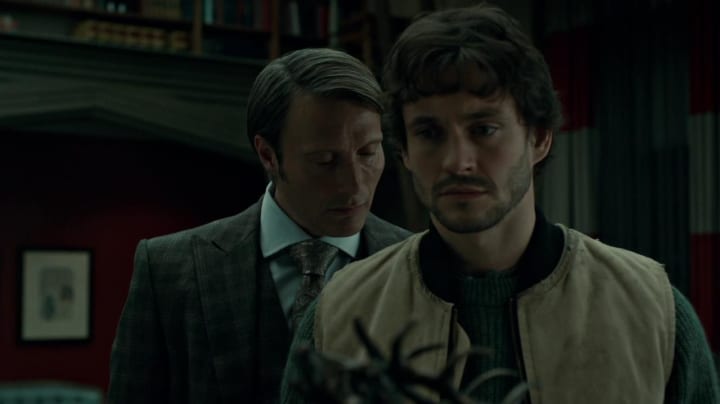
Secluded in his shadow, Hannibal is a hunter - preying on his victims and devouring their flesh. Will is very literally a fisherman - but when it comes to their relationship, it is Will among the woods, trying to spot Hannibal in the act, and Hannibal who is the fisherman; a lure pretending to be Will’s kind. Baiting him to bite on his hook, so he can pull him into his darkness. Hannibal recognises something within Will, a potential for menace - a potential he aches to nurture.
When Will bites, Hannibal turns him into bait for the FBI - framing him as a psychopath responsible for his acts. But this is not only done to cover Hannibal’s own scent - it is to show Will his face, in hopes he might see his own. It is, in a fascinatingly twisted way, out of the goodness of Hannibal’s heart.
Framed and imprisoned, Will is finally awake and thirsts for Hannibal’s blood. As we enter the mist of season two, the roles shift, and Will morphs into his place as the fisherman. Seeing Hannibal clearly for the first time, he knows that to catch him, he must be distorted into the version of himself that Hannibal always saw within him.
“Folie à deux. A French psychiatric term; Madness shared by two.”
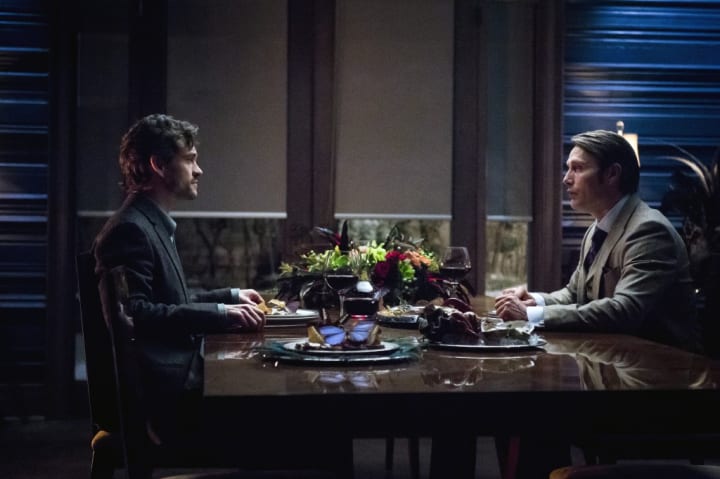
Throughout the series, two images haunt Will; The Stag and the Wendigo. (Note: There are many different speculations and interpretations of these, and I’m not claiming that mine is the ‘correct’ one - this is purely a narrative I find to resonate with my understanding of the characters and their dynamics.)
The Stag first appears after Will sees Cassie Boyle’s lifeless body impaled on a stag head in a field. As you will remember, this was a gift-wrapped murder by Hannibal - intending to guide Will in the right direction. The Stag persists to arise in Will’s dreams and hallucinations; beckoning him and nudging him onto specific paths. It is a visual representation of the influence that Hannibal holds over Will - the steering of the wheel, the pulling of the strings - as well as Garrett Jacob Hobbs’ lingering silhouette.
As Will slowly grows conscious of this influence, The Stag transforms into a new figure; the Wendigo.
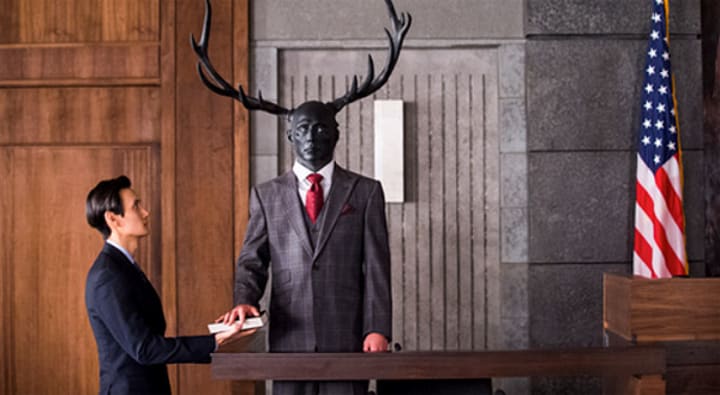
The Wendigo comes from the Algonquian legend. In its origin, it has been described as a monster with human characteristics or a spirit which possesses a human to make them monstrous and invoke them into greed, murder, and cannibalism. Through history, psychiatrists have referred to those who experience intense craving of human flesh as to be under a “Wendigo Psychosis” - as many would claim to be possessed by the spirit of the legend.
In the opening scene of Savoureux (1.13, the final episode of season one) Will is hunting The Stag in his dream. Just before he wakes up in a sweat, The Stag shapeshifts into the Wendigo. The fire is getting closer. Throughout the episode he sees the Wendigo twice more, lurking over him. But it isn’t until Hassun (2.3) that Hannibal takes its form. The Wendigo represents hunger and greed. It is Hannibal's raw and naturalistic desire of Will, and the power he holds above him.
Ko No Mono (2.11) opens up on the Wendigo approaching a wounded Stag in the frosty forest. The Stag wails in anguish as a body emerges from its belly - the body of an antlered Will Graham.
This is his becoming.
“We’re conjoined. I’m curious whether either of us can survive separation.”
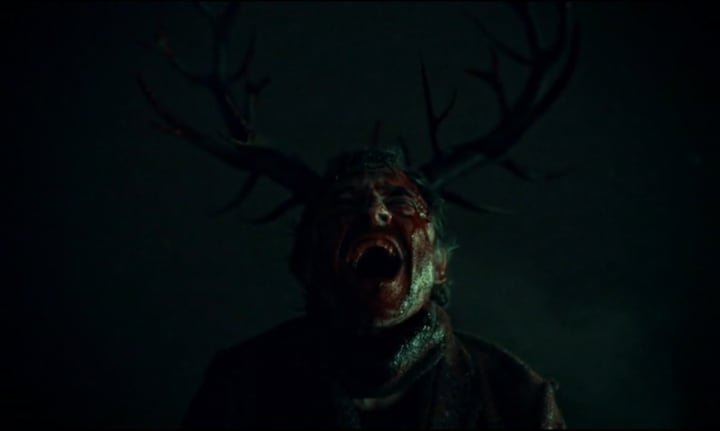
Faced with the darkness within him, Will has collided with Hannibal. And although Hannibal may be the devil of the two, his affection for Will is profound and sincere. This bond goes way beyond that of ‘from enemies to lovers’ - it is a madness shared by two; a constant spiral of desire and destruction - of preying and devouring.
They cannot live with one another - nor can they live without one another. And so, they must fall with each other.
I so clearly remember the night the final acts of the third season of Hannibal played out before me for the first time; hurdled up in my covers, headphones hugging my ears tight, heartbeats hurrying as I held my breath still. It was as if I could feel every fragment, every molecule, every vibration running through the two. It was as if I, engulfed and confronted by Hannibal Lecter's darkness, had met my own becoming.
I have spent years digesting the delicacy that is Will Graham and Hannibal Lecter. And every time I ingest it, I discover new layers and nuances to its texture and taste - in presentation and creation. Despite the many tries to copy its recipe, no one has come even close to replicate the entirety of the experience that consuming it is. It is quite simply a speciality that remains unmatched.
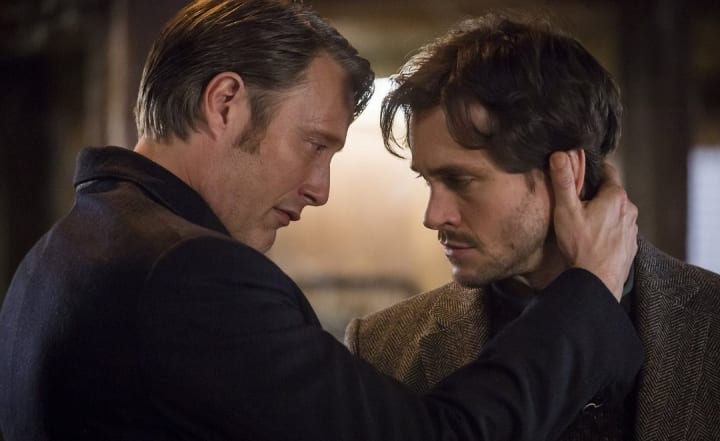
If you want to support this piece and my work, please consider sharing it online - or even leave a tip! Your support means the world to me <3
Do you want to discuss this further? Hit me up on Twitter at @evitacreates, or on Instagram at @MalinEvita - I would love to hear your thoughts!
Read more by Malin Evita:
About the Creator
malin evita
Creator of Making It: Women in Film





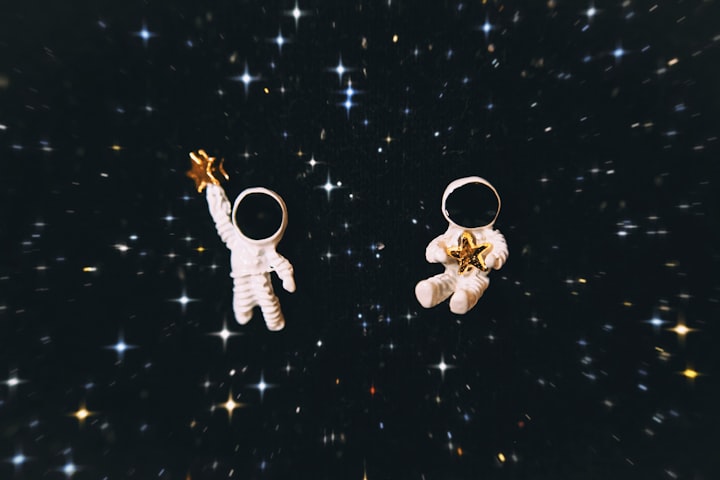
Comments
There are no comments for this story
Be the first to respond and start the conversation.